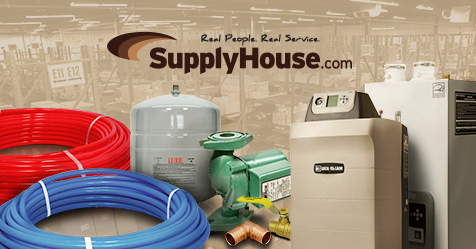Hello,
After lots of research and planning, I recently installed a Drolet Heat Commander into my basement to heat my two story house. Ducting currently goes to only the first floor which is perfect because I like to keep the second floor about 10 degrees cooler than the first floor.
I love the Heat Commander and it is working perfectly. However, it seems to put out too much heat with the fires I've been building. Outside temp has been upper 30s (F) during the day and lower 20s at night. I set the thermostat to 71 and it ends up being in the upper 70s in the house during the day. I understand the Heat Commander blower turns on at a set temp regardless of thermostat temp to remove heat from the stove. I have been burning oak and ash. I have little bit of maple (lower btu) but not much.
When I load the Heat Commander, I have been putting most of the wood near the back wall of the stove to slow the burn. I have been filling the stove about 2/3 of the way full while still leaving the 4 inch clearance to the loading door like the manual states. Wood is packed tightly so it burns slower. Burn times between reloading are about 8 hours.
I would like to be able to load the stove to get an 8 hour burn time without overheating the house. I am adding one of two 6 inch takeoffs (ducts) to the basement this weekend to try to relocate some of the heat so the 1st floor won't heat up so fast.
Does anyone know of any methods of getting long burn times out of the Heat Commander without having super hot fires? I don't want the fire to smolder/cause creosote build up either.
Thanks in advance!
After lots of research and planning, I recently installed a Drolet Heat Commander into my basement to heat my two story house. Ducting currently goes to only the first floor which is perfect because I like to keep the second floor about 10 degrees cooler than the first floor.
I love the Heat Commander and it is working perfectly. However, it seems to put out too much heat with the fires I've been building. Outside temp has been upper 30s (F) during the day and lower 20s at night. I set the thermostat to 71 and it ends up being in the upper 70s in the house during the day. I understand the Heat Commander blower turns on at a set temp regardless of thermostat temp to remove heat from the stove. I have been burning oak and ash. I have little bit of maple (lower btu) but not much.
When I load the Heat Commander, I have been putting most of the wood near the back wall of the stove to slow the burn. I have been filling the stove about 2/3 of the way full while still leaving the 4 inch clearance to the loading door like the manual states. Wood is packed tightly so it burns slower. Burn times between reloading are about 8 hours.
I would like to be able to load the stove to get an 8 hour burn time without overheating the house. I am adding one of two 6 inch takeoffs (ducts) to the basement this weekend to try to relocate some of the heat so the 1st floor won't heat up so fast.
Does anyone know of any methods of getting long burn times out of the Heat Commander without having super hot fires? I don't want the fire to smolder/cause creosote build up either.
Thanks in advance!


